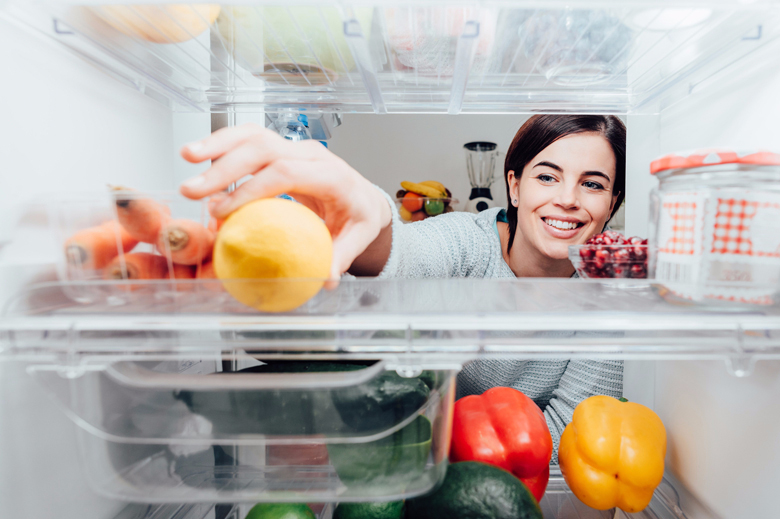
Don’t you feel guilty when you realize food in the refrigerator has gone bad and items in the pantry have grown old? I do! Stop staring at me with all your overgrown eyes, potato! The guilt cuts even deeper when meat gets tossed. If I’m going to be an omnivore, shouldn’t I at least make sure the animal’s life wasn’t taken in vain?
So how can we keep from wasting food and money? Eating down the fridge. And the pantry. ![]() A cross between leftovers and new meals, eating down the kitchen is a mindful effort to use food before it becomes waste, and to minimize purchasing new food when an existing pantry or fridge item would work instead.
A cross between leftovers and new meals, eating down the kitchen is a mindful effort to use food before it becomes waste, and to minimize purchasing new food when an existing pantry or fridge item would work instead.
This summer, I decided to live this concept. I scored eight pounds of discounted tomatoes at the end of the day at a local farmers market, thinking I’d make a big pot of tomato sauce. The only problem was that I couldn’t fit that many raw tomatoes in even my biggest pot. So some tomatoes went into the pot and some went on a baking sheet to roast, and everything was processed by my immersion blender in the end. For protein, all I had to do was open my refrigerator door. There were two small chicken breasts that had been thawed a few days earlier but hadn’t been cooked because I had an unexpected flurry of evening activities that week. Time to use them up. Fresh tomato sauce on top of chicken. Yum! And just like that, the tomatoes and chicken were saved from the trash bin. To make it a complete meal, I cooked some dry pasta that was already in the pantry and topped it with leftover string beans that had been sitting next to the defrosted chicken. A nutritious, delicious and guilt-free meal!
To use up some zucchini recently, I tried out zucchini fritters for the first time. Intending to eat down the kitchen with this recipe, I tested a few swaps. Grating in two potatoes added starch that usually comes from flour. There was only one egg in the house, so instead of buying more, I sprinkled in chia seeds. They served double-duty giving the fritters shape and sopping up water given off by the produce. Making use of in-season zucchini and finally using some chia seeds? Success!
Sometimes the answer isn’t as obvious. When I worked at a restaurant I once rescued eight cups of mushroom stock and a big pile of portobello stems that would otherwise have been trash. Searching the internet for “things to do with mushrooms” was a start, but soon I realized the answer was already in my recipe file. I made one of my favorite sautéed chicken dishes, but traded chicken stock for mushroom stock. And, instead of adding one can of mushrooms, in went … what is the exact measurement of “a big pile?” It was a nice variation on a familiar dish, pushed me out of my culinary comfort zone, and the mushrooms were eaten rather than discarded.
Eating down the kitchen gives me a feeling of accomplishment. It reduces food waste, squeezes every penny of my money’s worth out of my purchases, and encourages me to think creatively about ingredients and recipes.

